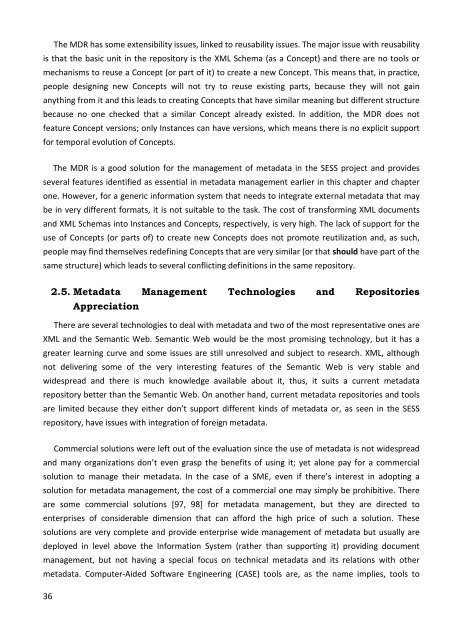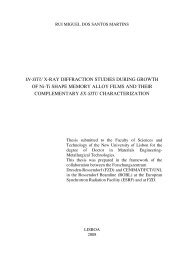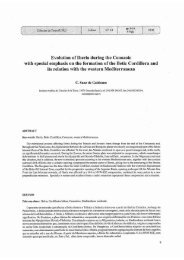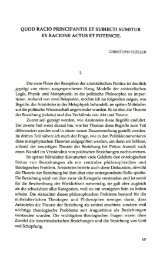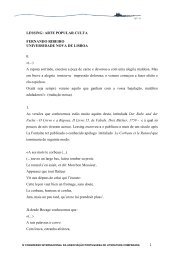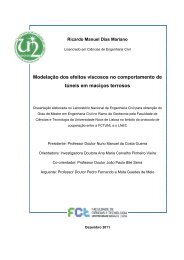Extensible Metadata Repository for Information Systems - RUN UNL ...
Extensible Metadata Repository for Information Systems - RUN UNL ...
Extensible Metadata Repository for Information Systems - RUN UNL ...
Create successful ePaper yourself
Turn your PDF publications into a flip-book with our unique Google optimized e-Paper software.
The MDR has some extensibility issues, linked to reusability issues. The major issue with reusability<br />
is that the basic unit in the repository is the XML Schema (as a Concept) and there are no tools or<br />
mechanisms to reuse a Concept (or part of it) to create a new Concept. This means that, in practice,<br />
people designing new Concepts will not try to reuse existing parts, because they will not gain<br />
anything from it and this leads to creating Concepts that have similar meaning but different structure<br />
because no one checked that a similar Concept already existed. In addition, the MDR does not<br />
feature Concept versions; only Instances can have versions, which means there is no explicit support<br />
<strong>for</strong> temporal evolution of Concepts.<br />
The MDR is a good solution <strong>for</strong> the management of metadata in the SESS project and provides<br />
several features identified as essential in metadata management earlier in this chapter and chapter<br />
one. However, <strong>for</strong> a generic in<strong>for</strong>mation system that needs to integrate external metadata that may<br />
be in very different <strong>for</strong>mats, it is not suitable to the task. The cost of trans<strong>for</strong>ming XML documents<br />
and XML Schemas into Instances and Concepts, respectively, is very high. The lack of support <strong>for</strong> the<br />
use of Concepts (or parts of) to create new Concepts does not promote reutilization and, as such,<br />
people may find themselves redefining Concepts that are very similar (or that should have part of the<br />
same structure) which leads to several conflicting definitions in the same repository.<br />
2.5. <strong>Metadata</strong> Management Technologies and Repositories<br />
Appreciation<br />
There are several technologies to deal with metadata and two of the most representative ones are<br />
XML and the Semantic Web. Semantic Web would be the most promising technology, but it has a<br />
greater learning curve and some issues are still unresolved and subject to research. XML, although<br />
not delivering some of the very interesting features of the Semantic Web is very stable and<br />
widespread and there is much knowledge available about it, thus, it suits a current metadata<br />
repository better than the Semantic Web. On another hand, current metadata repositories and tools<br />
are limited because they either don’t support different kinds of metadata or, as seen in the SESS<br />
repository, have issues with integration of <strong>for</strong>eign metadata.<br />
Commercial solutions were left out of the evaluation since the use of metadata is not widespread<br />
and many organizations don’t even grasp the benefits of using it; yet alone pay <strong>for</strong> a commercial<br />
solution to manage their metadata. In the case of a SME, even if there’s interest in adopting a<br />
solution <strong>for</strong> metadata management, the cost of a commercial one may simply be prohibitive. There<br />
are some commercial solutions [97, 98] <strong>for</strong> metadata management, but they are directed to<br />
enterprises of considerable dimension that can af<strong>for</strong>d the high price of such a solution. These<br />
solutions are very complete and provide enterprise wide management of metadata but usually are<br />
deployed in level above the In<strong>for</strong>mation System (rather than supporting it) providing document<br />
management, but not having a special focus on technical metadata and its relations with other<br />
metadata. Computer-Aided Software Engineering (CASE) tools are, as the name implies, tools to<br />
36


